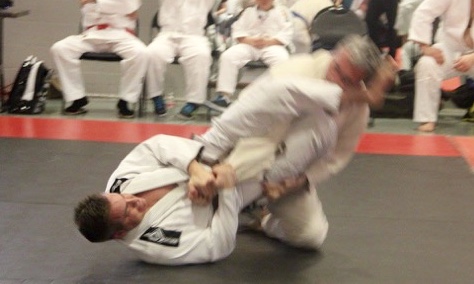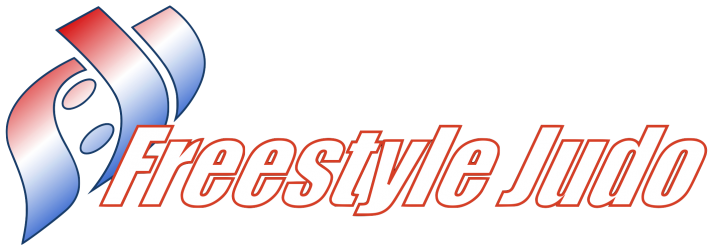There is only one Judo, and that is the Kodokan Judo of Jigoro Kano. Judo is more than simply a sporting event; rather, it is a complete martial art that has adapted over the years to various fighting styles and techniques. Kodokan Judo includes techniques from wrestling, sambo, and of course modern jujitsu. However, over the past two decades many of these fighting styles were discouraged, and eventually penalized, in tournament Judo for reasons cited as “better television viewing”. Unfortunately, the resulting rule changes resembled Greco-Roman wrestling in a kimono, all the while professional Mixed Martial Arts grappling gained in television popularity.
Freestyle Judo brings back the “Golden Age” of Judo competition by embracing the fighting styles of wrestling, sambo, and modern jujitsu. Competitors who specialize in standing techniques can throw for ippon. Wrestlers who prefer lower body attacks can shoot for the legs. Grapplers who specialize in submissions have the time and flexibility to fight on the ground. All of these styles are good Judo.
A Judo coach observing a Freestyle Judo match for his first time remarked; “That looks just like Judo.” The answer was; “That’s because it is Judo. It’s just Judo the way it ought to be done.” Good Judo is good Judo and the rules of Freestyle Judo allow Judo athletes to use all the skills of Judo during a match.
Freestyle Judo encourages participation from Brazilian Jiu-Jitsu, Wrestlers, and Mixed Martial Arts enthusiasts by providing an open-ended competition format.
Freestyle Judo is endorsed by Dr. AnnMaria De Mars, World Judo Champion, former president of the USJA, and mother of Ronda Rousey, UFC Champion and 2008 Olympic Judo Bronze Medalist, as the “Ultimate Judo Style for MMA”.
Freestyle Judo is an outgrowth or continuation of Judo as a sporting activity with adaptations in how a Judo match is scored making it an interesting and positive approach to Judo competition. It’s most definitely not our intention in any way replace the Kodokan Judo of Jigoro Kano. Judo, as a combat sport, has stood the test of time and whether people realize it or not, has been the technical and theoretical basis for many other combat sports as well. There is only one Judo and that is the Kodokan Judo founded by Professor Jigoro Kano in 1882. How people view a sporting event is directly affected by the rules of the game. Judo is no different. The rules of the sport of Judo have changed through the years, and as is the case with any physical activity, these changes in the contest rules affect how people teach, learn and train in Judo. Freestyle Judo’s rules offer athletes and coaches another opportunity to compete and dispay their skills in the sport of Judo. Freestyle Judo is not intended to replace the existing rules of Judo; rather, Freestyle Judo offers more competitive opportunities for everyone who takes part.
Freestyle Judo is not a different “system” of Judo. Good Judo is good Judo. The rules of Freestyle Judo encourage all the skills and strategy of good Judo to be used.
Freestyle Judo uses a numerical point scoring system for both throwing and groundfighting. This provides an objective set of criteria for allowing the athletes (and not the referees) to determine the winner and loser in the match.
Freestyle Judo is Judo, the way your sensei did it. If you are old enough to remember how Judo was done in the 1960s through 1980s, you will remember that Judo is really a combat sport. Freestyle Judo allows all the elements of good Judo to be used in a safe and fair way. No soft or rolling Ippons and the referees allow the athletes time to engage in newaza. Freestyle Judo is not for the faint of heart. It is what Judo was intended to be as a combat sport.
Freestyle Judo is the only form of sport Judo that includes a “no-gi” category. Basically, No-Gi Freestyle Judo is “Judo without a jacket.”

